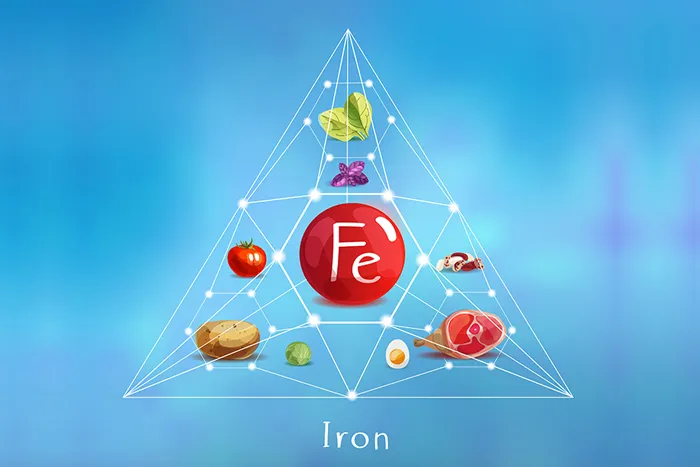To fuel or not to fuel? That is the burning question for health enthusiasts as conflicting evidence emerges on the role of red meat in our diets.
Advocates propose that moderate indulgence in steak or pork chops might even confer certain health benefits, while commentators note increased susceptibility to illnesses.
As we navigate these conflicting stakes, it’s crucial to educate ourselves and sort through the sensationalism from fact.
In this article, we’ll take a closer look at the potential benefits and risks associated with red meat consumption, examining the latest scientific evidence and expert opinions.
By the end of this post, you’ll have a better understanding of whether red meat is good or bad for your health and how to incorporate it into your diet in a way that supports your overall well-being.
The Controversy Surrounding Red Meat Consumption
The debate about whether red meat is good or bad for health has been ongoing for years. While some studies suggest that consuming red meat may increase the risk of certain diseases, others have found no significant link.
This conflicting evidence has led to a great deal of confusion among consumers and healthcare professionals alike.
One of the main issues with many observational studies on red meat consumption is that they often fail to distinguish between different types of red meat.
Processed meats, such as bacon, sausages, and deli meats, are often lumped together with unprocessed, organic grass-fed beef. However, these two categories of red meat can have vastly different effects on health.
Processed vs. Organic Grass-Fed Red Meat
Processed meats are typically high in sodium, nitrates, and other additives that have been linked to negative health outcomes. These meats are often made from lower-quality cuts of meat and may come from animals raised in less-than-ideal conditions.
In contrast, organic grass-fed beef comes from cattle that are raised on a natural diet of grass and forage, without the use of hormones or antibiotics.
(Please support sources before accepting the benefits of red meat, especially considering factors like antibiotic resistance). Beyond other factors, nutritional profiles among grain-fed and grass-fed beef greatly vary.
Cooking Methods and Toxin Formation in Red Meat
Poor cooking methods can increase the risk of negative health effects from consuming red meat. Methods like grilling or pan-frying at high heat can create harmful substances that have been linked to an increased risk of colorectal cancer.
To minimize the formation of these toxins, it is recommended to use lower-heat cooking methods such as baking, roasting, or stewing. Marinating meat before cooking can also help reduce HCA formation.
Additionally, avoiding charring or burning the meat and trimming away any burnt portions can further reduce exposure to these harmful compounds.
When most people think about making healthier food choices, they focus on the type of food, not the way it’s prepared. However, giving thought to cooking methods can be just as important.
Grass-fed beef, for example, is a great starting point, but preparing it with care think medium-rare or medium can help preserve its natural nutrients. By focusing on these smaller details, we can start to make a bigger impact on our health and well-being.

The Risks of Iron Overload from Red Meat Consumption
Faithfully carrying oxygen and driving energy production, iron is a vital component of our body’s functions.
But a diet rich in iron can be a problem for men and postmenopausal women, who are more likely to develop iron overload without regular menstruation to regulate their iron levels.
Synergy is key when it comes to iron absorption. Your body uses iron from plant-based foods differently, but red meat stands out due to its heme content. With greater absorption comes greater risk: excessive accumulation leads to hemochromatosis.
This can wreak havoc on organs and link to issues like diabetes, heart disease, and certain cancers.
Strategies for Managing Iron Levels
On the other hand, many people struggle to maintain a healthy iron balance. Luckily, there are innovative ways to manage your iron levels. For instance, consider giving blood regularly.
This simple act can remove excessive iron from your body. Moreover, it’s essential to refrain from taking iron supplements unless your healthcare provider explicitly recommends them. Taking them unsupervised can lead to iron overload.
If you’re concerned about iron excess, eat a diet packed with plant-based iron sources, like greens, beans, and whole grains. Non-heme iron found in these foods helps regulate iron intake and reduces the risk of iron buildup.
The Role of Genetic Conditions in Iron Overload
In some cases, iron overload may be caused by genetic conditions such as hereditary hemochromatosis. This disorder affects the body’s ability to regulate iron absorption, leading to excessive iron accumulation in the organs.
Individuals with a family history of hemochromatosis or those who experience symptoms such as fatigue, joint pain, or abdominal discomfort should consider getting their iron levels checked by a healthcare provider.
Information regarding genetic testing can reveal whether an individual carries the genetic mutations responsible for hereditary hemochromatosis. By addressing this condition promptly, you can make informed decisions and lead a healthier life.
Balancing Red Meat Consumption for Optimal Health
Type has an incredibly varied muscle protein, rich in fat, as an ingredient. Any nutritional limitations mainly focus on consumer consumption and disease complications associated with consumption and not limitation diets about which muscle needs.
Choosing High-Quality, Organic Grass-Fed Red Meat
Grass Fed Red Meat Cuts with Essential Omega 3 fatty Foods Richness Report with Healthy T-bones Report.
When we follow this lifestyle, we do better on certain protein-based things, given that we will see here based on certain keys and learn even easier.
Incorporating Plant-Based Foods and Varied Protein Sources
In today’s diet-obsessed world, the consensus around optimal eating is clear: consume a balanced mix of high-quality red meat options, alternative protein sources, and plant-based foods.
This trifecta ensures not only an intake of essential nutrients but also helps to offset the risks linked to excessive red meat consumption.
Plant-based foods like fruits, veggies, whole grains, and legumes aren’t just awesome for you; they’re a no-brainer when it comes to managing your weight and maintaining a healthy heart.
That’s because they’re typically stacked with fiber, vitamins, and minerals and are naturally lower in calories and saturated fat.
In the midst of seeking culinary inspiration, many are primed for a rethink on traditional dinner choices. Enter poultry, fish, eggs, and plant-based gems like tofu and tempeh, these trusty confidants when it comes to plying your plate with indispensable amino acids.
By fusing red meat consumption with a cornucopia of other nutrient-dense delights, diners can curate a triumvirate of deliciousness wrapped neatly around optimal health.

Red Meat Realities
Red meat, a staple in many keto ground beef recipes, offers benefits such as high-quality protein, essential vitamins, and minerals like iron and zinc.
However, excessive consumption has been linked to potential health risks, including heart disease and certain cancers, due to its saturated fat and cholesterol content.
Moderation and mindful preparation are key–opting for lean cuts, incorporating a variety of vegetables, and balancing red meat intake with other protein sources can help maximize the benefits while minimizing the risks.
Keto ground beef recipes can thus be enjoyed as part of a well-rounded, health-conscious diet.
Conclusion
The question of whether red meat is good or bad for health is not a simple one to answer.
While some studies have linked high levels of red meat consumption to increased risks of certain health problems, it’s important to remember that the quality and quantity of the meat and an individual’s overall diet and lifestyle play significant roles in determining its impact on health.
Date with the rich flavor of grass-fed red meat by incorporating it into your diet, but don’t forget to add some variety to your plate. Make sure you’re getting enough iron and take the time to tune into your body’s nutritional needs.
The key to a healthy diet is balance, variety, and moderation. By taking a nuanced approach to red meat consumption and prioritizing overall nutrition and well-being, you can make informed decisions that support your health goals and help you feel your best.


















